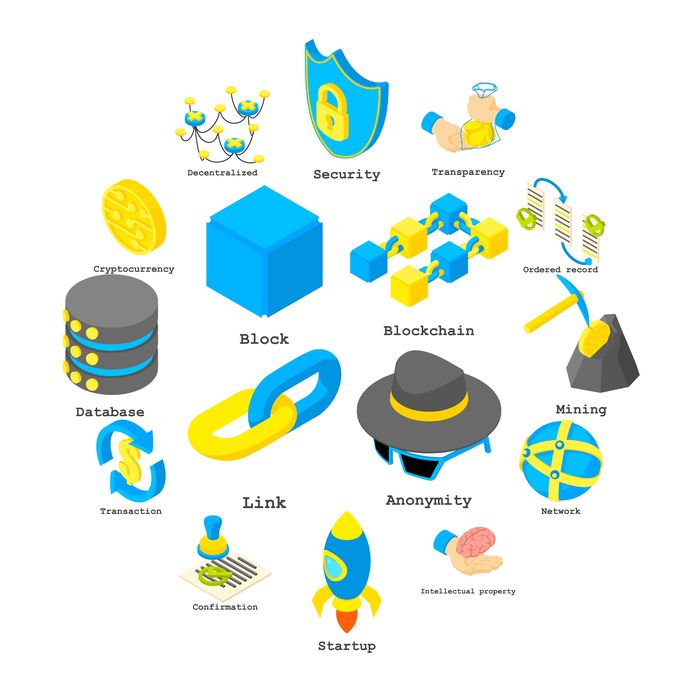While Blockchain is not necessarily the solution for every company and every problem, it still remains underutilized for many use cases. During the 2019 Blockchain Congress Geneva, Toufi Saliba ( 2019) presented that less than 0.2% Global Adoption Over 99.8% are still excluded, and he listed five problems related to the necessary Security, Efficiency, Confidentially Scalability and Interoperability. He explains further that ledger-based Blockchains fall short in providing true decentralization of power resulting in network forks or increased risks of 51% attacks”. Size of the network is vital, because if your data isn’t well-distributed, then it’s vulnerable to attack. Because of the way it works, you need to consider network bandwidth demands and the potentially huge size of your network communication overhead. In public Blockchains, each transaction is broadcasted to the entire network making it an incredibly inefficient way to achieve transaction finality. Also, users still need to depend on third parties for the exchange of value and privacy remains difficult to implement while being compliant with national jurisdictions. For example, the right to be forgotten or to completely delete personal data from a Blockchain may not be possible once it is stored on a Blockchain.
Where the internet is not reliable and there is poor energy infrastructure, Blockchain reaches its limits of scalability. Given the energy and connectivity prerequisites to run a Blockchain network, some parts of the world are deprived of using Blockchain by default. The bigger the Blockchain network gets the more expensive it becomes in terms of effort and resources to write a single block. Bitcoin, for example, is highly criticised for its colossal energy consumption. See

Cambridge Bitcoin Electricity Consumption Index, Source: https://www.cbeci.org/comparisons/
Much progress is required to develop standards for interoperability requirements of user activity across supporting Blockchains and decentralized applications. For example, the Open Federated Gateway Protocol (OFGP) is a protocol (Dshadowzh, 2019) developed by iBitcome.
Blockchain is also criticised for its low transaction throughput with reference to the BitCoin Blockchain when compared to a mature financial transaction platform such as MasterCard or Visa. However, that is how bitcoin works and not all Blockchain/DLTs generically.
However, people take note and understand what they can, but the point is that large audience still does not understand what’s going on with this technology. But then do they need to, if they are served well for their needs. What is essential to the widespread adoptability of these platforms is about the creation of systems that allow users to gain value without requiring knowledge. The creation of a user experience that allows for easy and secure private key management, just like managing common day passwords, without need to know about Blockchain, DLT, or cryptocurrency for that matter is missing and essential to the widespread adoptability of these platforms.
Werbach, (2019) explains that only way we will see mass-market adoption of Blockchain if people trusted Blockchain systems with humans accountable. The jurisdictions with the best regulation will attract activity and that trust cannot be just on software code that is a result of human activity. For example, regarding Smart Contracts, the Swiss Federal Council report on Legal Framework for Blockchain and DLT states that “a party cannot enter into a legal relationship with the computer system as a counterparty, since such a system lacks any legal personality within the meaning of the Civil Code” (MME, 2018). MME clarified that “even though not all legal questions are yet clarified, the Swiss Federal Council sees no need for further legislation since this technology is still at an embryonic stage and further experience is required”. Meanwhile, innovations related to the Blockchain solutions are mushrooming and regulators are having to play catch up. Several issues such as intellectual property, data privacy, and enforceability of contracts remain to be addressed. For widespread trusted adoption of Blockchain, clear legal definitions and regulatory frameworks are needed in order to clear up the current level of uncertainty that is associated with Blockchain.
Technical complexity is another reason why Blockchain adoption is not as fast as it could be. Given that it is relatively new not many experts are available, it is still considered difficult to develop, deploy and maintain. Cloud-based Blockchain infrastructures provided by big companies make it easier to attain wider adoption. However, initial costs, the limited data size of blocks and speed remain a deterrent for several use cases.
References:
Dshadowzh (2019) Contribute to ofgp/ofgp-core development by creating an account on GitHub, Go, OFGP [Online]. Available at https://github.com/ofgp/ofgp-core (Accessed 7 July 2019).
MME (2018) Shaping Switzerland’s DLT future – MME Analysis of the Federal Council’s Report on Blockchain and Distributed Ledger Technology, Zurich [Online]. Available at https://www.mme.ch/en/magazine/magazine-detail/url_magazine/shaping_switzerlands_dlt_future/ (Accessed 7 July 2019).
Toufi Saliba (2019) ‘Blockchain: The 5 missing necessities’, Geneva [Online]. Available at https://www.genevablockchaincongress.com/wp-content/uploads/2018/09/geneva-annual-blockchain-congress_presentation_toufi-saliba.pdf (Accessed 7 July 2019).
Werbach, K. (2019) People don’t trust blockchain systems – is regulation a way to help? [Online]. Available at http://theconversation.com/people-dont-trust-blockchain-systems-is-regulation-a-way-to-help-110007 (Accessed 7 July 2019).





